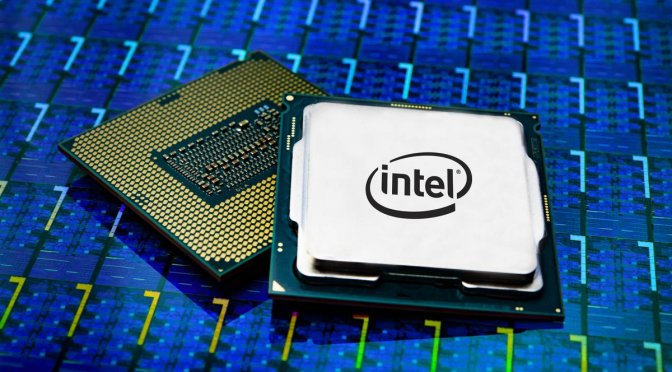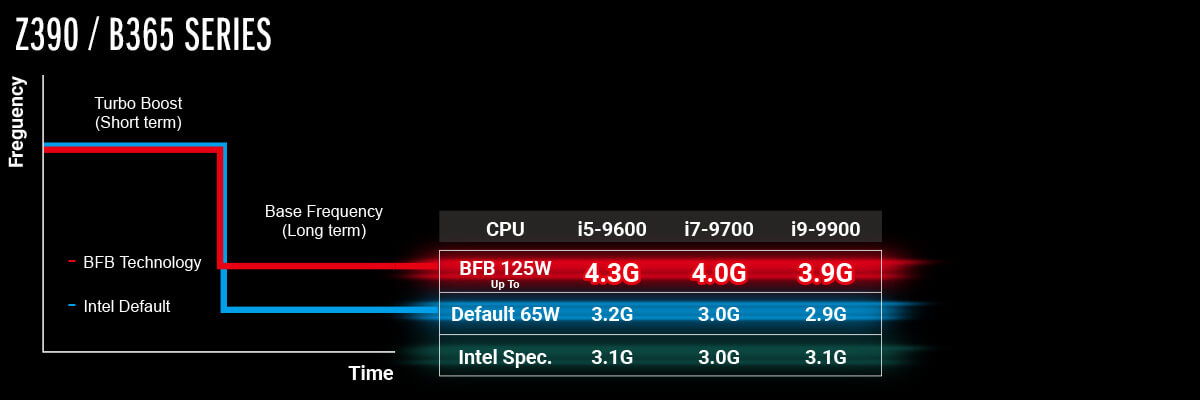Written by Metal Messiah
As I explained before in one article, ASRock is allowing overclocking on non-K Comet Lake S CPUs, and non-Z motherboards, mostly the B460/H470 chipsets.
ASRock’s new “Base Frequency Boost” is an overclocking feature which works on non-K processors. It basically makes the processors to operate above the default stock values, on both the Z-series and B-series Motherboard chipsets. Thus, it gives the CPU a slight performance boost !
Base Frequency Boost feature alters the POWER states/limits of Intel processors, allowing for a higher boost clock value to be effective for a long duration. The motherboard vendor is actually increasing the processor’s PL1 (power level 1) state from the default value to the maximum value, and locking it at that higher value. The power limit has been increased.
In ASRock’s example, the 65W Comet Lake CPU operates as if it was a 125W model. ASRock has shared a “new” chart showing how this BFB feature works on Z390 and B365 chipset series. Three “Coffee Lake” processors have been listed, the i5-9600, i7-9700, i9-9900 respectively.
As you see from the new graph/chart posted, the BFB technique helps with a “Long term” boost in the base frequency of the CPU, meaning the boost or increased clock is maintained for a longer duration. They have compared this with Intel’s default short term “Turbo boost” speed.
This isn’t pure “overclocking” though, but this feature unlocks some of the restrictions imposed on non-K CPUs. A higher TDP limit gives more breathing room, and also allows a non-K CPU to run at a higher base frequency. Of course, all this comes with a higher power consumption and more heat, so the CPU cooler will decide the highest base clock value.
At this time it is unclear whether other Motherboard vendors are also going to implement a similar overclocking feature. INTEL has not mentioned anything regarding this issue, and the company might even ban and shut down this feature in the future, if need be.
List of all supported Motherboards can be found here.
User’s articles is a column dedicated to the readers of DSOGaming. Readers can submit their stories and the Editorial team of DSOGaming can decide which story it will publish. All credits of these stories go to the writers that are mentioned at the beginning of each story. Contact: Email


